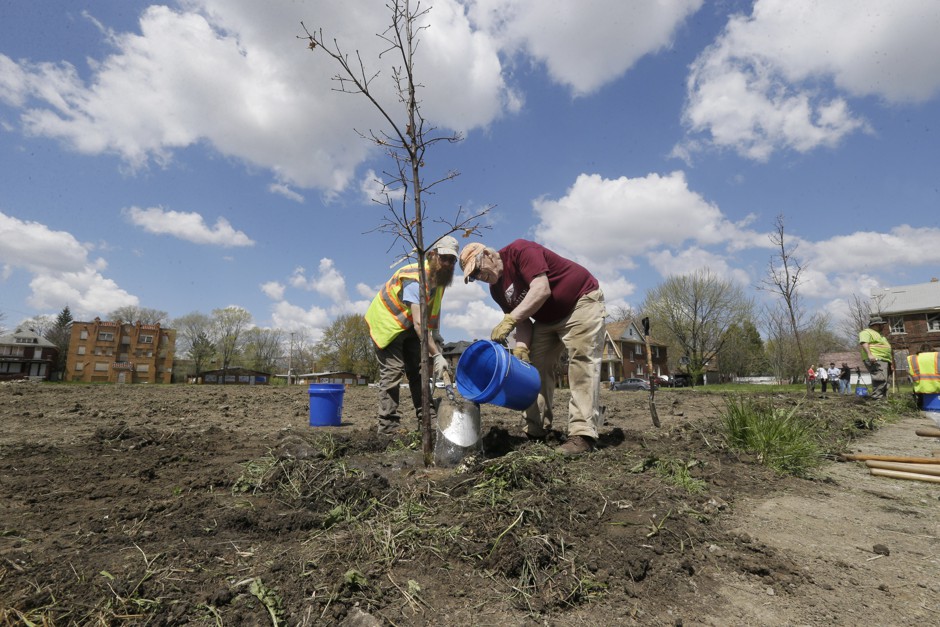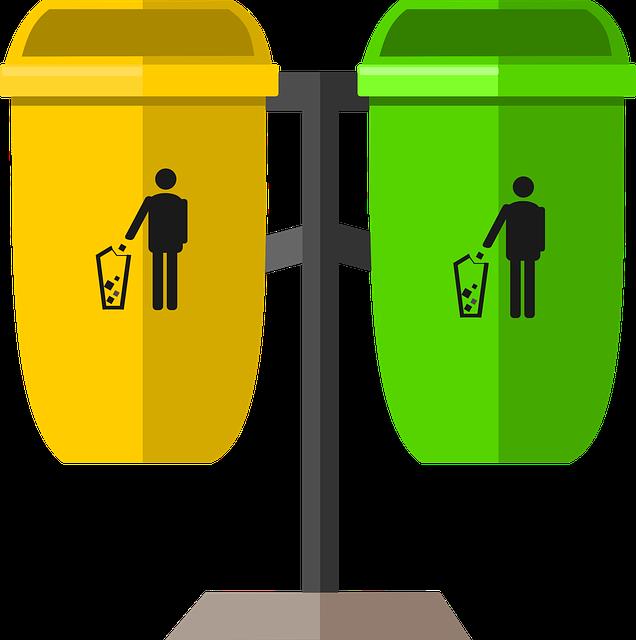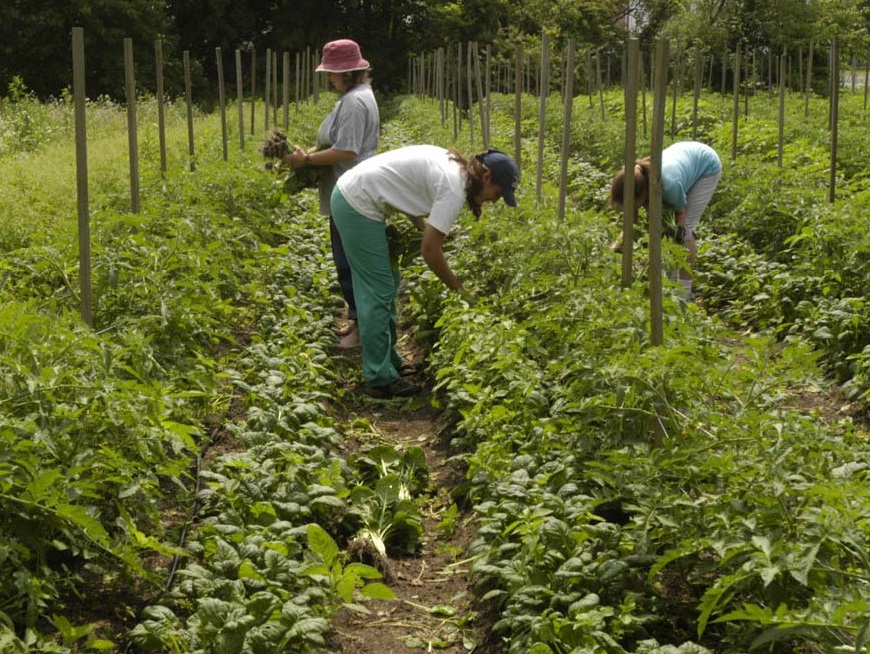
Climate change is an urgent global challenge, demanding proactive and innovative solutions. In this article, we explore the top 10 strategies for climate change adaptation, focusing on coastal barriers, urban heat island mitigation, and more.
These strategies, based on rigorous data and technical expertise, offer concrete ways to address the impacts of climate change. By implementing these solutions, we can protect vulnerable communities, preserve ecosystems, and build a sustainable future.
Join us as we delve into these effective and practical measures to combat climate change.
Coastal Barriers
Coastal barriers are increasingly crucial for climate change adaptation as they frequently provide protection against rising sea levels and storm surges. These barriers play a vital role in coastal erosion prevention and safeguarding coastal communities from the damaging impacts of climate change. With the acceleration of sea level rise and the intensification of storms, the need for effective coastal barriers has become more urgent than ever before.
Coastal erosion prevention is a key function of these barriers. They act as physical barriers, reducing the energy of waves and currents, and preventing the erosion of coastal land. This not only protects valuable coastal ecosystems but also maintains the integrity of infrastructure, such as roads, buildings, and utilities, that are often located near the coastline.
Furthermore, coastal barriers offer storm surge protection. By acting as a buffer, they absorb and dissipate the force of storm surges, reducing the risk of flooding and damage to coastal communities. This is particularly important as extreme weather events become more frequent and intense due to climate change.
Urban Heat Island Mitigation
Urban heat island mitigation is crucial in addressing the challenges posed by rising temperatures in urban areas.

Two effective strategies for mitigating urban heat islands are the implementation of green roofs and the use of heat-resistant pavement solutions.
Green roofs provide a natural cooling effect by reducing heat absorption and increasing evapotranspiration.
Heat-resistant pavements reflect more sunlight and absorb less heat compared to traditional pavements.
These solutions not only help to lower temperatures in urban areas but also contribute to energy savings and improved air quality.
Green Roofs for Cooling
Green roofs provide an effective solution for mitigating the heat island effect in urban areas. These roofs are covered with vegetation, which helps to reduce the amount of heat absorbed by buildings and pavement. The plants on green roofs absorb solar radiation and release moisture through evapotranspiration, which cools the surrounding air. This process can significantly lower the surface temperature of the roof and the surrounding area, reducing the need for air conditioning and energy consumption.
Green roofs also have the potential to improve air quality and biodiversity in urban areas. In addition to their cooling benefits, green roofs can also contribute to energy efficiency by providing insulation, reducing the need for heating during winter months. Implementing green roofs in cities can be a cost-effective way to combat the urban heat island effect while promoting sustainability and resilience.
Heat-Resistant Pavement Solutions
Heat-resistant pavement solutions provide an effective approach to mitigating the heat island effect in urban areas, offering a quantifiable reduction in surface temperatures and energy consumption.

Heat island effect refers to the phenomenon where urban areas experience higher temperatures compared to surrounding rural areas due to the absorption and retention of heat by buildings and pavements.
Heat resistant pavement technology utilizes innovative materials and design strategies to minimize heat absorption and maximize heat reflection.
These pavements are designed to have high solar reflectance and thermal emissivity, reducing the amount of solar radiation absorbed and re-emitted by the pavement.
By implementing heat-resistant pavements, urban areas can significantly lower surface temperatures, decrease the energy required for cooling buildings, and improve overall thermal comfort.
This technology presents a practical and sustainable solution for heat island effect mitigation in urban environments.
Forest Fire Prevention
Forest fire prevention is crucial in mitigating the impacts of climate change.
Community fire safety measures, such as creating defensible spaces and implementing fire-resistant building codes, are essential for reducing the vulnerability of communities to wildfires.

Early detection systems, such as remote sensing technologies and monitoring networks, play a vital role in detecting and responding to fires swiftly.
Additionally, sustainable forest management practices, such as controlled burns and selective logging, can help reduce fuel loads and promote healthier ecosystems, further preventing the occurrence and severity of forest fires.
Community fire safety measures are essential for preventing and mitigating the risks of forest fires. Engaging the community in fire prevention measures is crucial to ensure the safety and protection of both lives and property.
One effective strategy is to promote education and awareness campaigns that highlight the importance of fire safety practices, such as proper disposal of cigarette butts and campfire management.
Additionally, implementing fire-resistant landscaping techniques, such as creating defensible space around homes and using fire-resistant building materials, can significantly reduce the risk of fire spread. Installing early warning systems, such as smoke detectors and fire alarms, can also help alert residents and authorities promptly.
Furthermore, establishing community-based fire prevention programs, such as volunteer firefighter initiatives and neighborhood watch groups, can enhance the overall preparedness and response capabilities of the community.
Early Detection Systems
One key aspect of forest fire prevention is the implementation of early detection systems.

Early warning and monitoring systems play a crucial role in mitigating the devastating impacts of forest fires.
With the advancement of climate monitoring technologies, such as satellite imagery and remote sensing, real-time data can be collected to detect potential fire outbreaks.
These monitoring systems allow for the rapid identification of fire hotspots, enabling immediate response and containment efforts.
Additionally, risk assessment tools and vulnerability assessments aid in identifying areas at higher risk of forest fires, helping prioritize prevention measures and resource allocation.
Sustainable Forest Management
Implementing sustainable forest management practices is crucial in preventing and mitigating the occurrence and impact of forest fires. Sustainable forest management involves the careful planning and implementation of strategies that promote forest health and resilience, including disease control measures.
Forest fires can have devastating effects on ecosystems, communities, and economies, causing significant loss of biodiversity, carbon emissions, and infrastructure damage. By adopting sustainable forest management practices, such as regular monitoring and maintenance, controlled burns, and the establishment of fire breaks, the risk of forest fires can be reduced.
Additionally, disease control measures, such as early detection and prompt response to outbreaks, can help prevent the spread of pathogens that can weaken trees and increase the fire risk. Sustainable forest management is essential in preserving the health and productivity of forests, while also safeguarding against the threat of forest fires.

Floodplain Restoration
To address the impacts of climate change, an effective strategy for adaptation includes the restoration of floodplains. Floodplain restoration involves revitalizing ecosystems and managing river channels to mitigate the risks associated with flooding and enhance the resilience of communities.
Here are three key benefits of floodplain restoration:
- Ecosystem revitalization: By restoring floodplains, we can recreate and enhance natural habitats, promoting biodiversity and supporting the functioning of healthy ecosystems. This helps to preserve the unique flora and fauna that depend on these habitats and contributes to the overall health of the environment.
- Flood risk reduction: Restoring floodplains allows for the natural absorption and storage of floodwaters, reducing the risk of downstream flooding. This can help protect communities and infrastructure from the devastating impacts of extreme weather events.
- Water quality improvement: Floodplain restoration can help filter and purify water as it passes through the floodplain, improving water quality and reducing pollution. This is crucial for maintaining the health of aquatic ecosystems and ensuring a sustainable water supply for both human and ecological needs.
Drought-Resistant Crops
Drought-resistant crops play a crucial role in mitigating the impacts of climate change on agricultural systems. As global temperatures continue to rise and water scarcity becomes a pressing issue, the need for crops that can withstand drought conditions is becoming increasingly important. Drought resistant crop research focuses on developing varieties that are able to survive and thrive under limited water availability, ensuring food security and sustainability in arid regions.
To address this challenge, farmers can adopt various farming techniques for arid regions. These include selecting crops that are naturally adapted to drought conditions, implementing efficient irrigation systems, and practicing conservation agriculture. Conservation agriculture techniques, such as using cover crops and minimizing soil disturbance, help to improve soil health and water retention capacity, thereby reducing the vulnerability of crops to drought stress.
Green Infrastructure
Green infrastructure is a crucial component of climate change adaptation strategies, offering numerous benefits for urban environments.
Urban greening initiatives, such as the creation of green spaces and the planting of trees, can help mitigate the heat island effect, reduce air pollution, and improve water management.
Additionally, implementing sustainable drainage systems can enhance stormwater management and reduce the risk of flooding, thus increasing the resilience of cities to climate change impacts.

Benefits of Green Infrastructure
Implementing green infrastructure provides numerous benefits for climate change adaptation efforts. Green infrastructure refers to the use of natural systems and processes to manage water, reduce urban heat island effects, and enhance biodiversity in urban areas.
Here are three key benefits of green infrastructure:
- Stormwater management: Green infrastructure can absorb and store rainwater, reducing the strain on traditional drainage systems and preventing flooding. By using features like green roofs, rain gardens, and permeable pavements, urban areas can effectively manage stormwater runoff and improve water quality.
- Urban heat island mitigation: Green infrastructure helps to cool urban environments by providing shade, reducing the amount of heat absorbed by buildings and pavement. Trees, green roofs, and green walls can significantly lower temperatures, improving the overall comfort and livability of cities.
- Biodiversity enhancement: Green infrastructure creates habitats for various plant and animal species, promoting biodiversity in urban settings. This not only supports ecological balance but also provides opportunities for recreational activities and enhances the aesthetic appeal of cities.
Urban Greening Initiatives
With the benefits of green infrastructure in mind, the focus now shifts to the implementation of urban greening initiatives, specifically those related to green infrastructure.
These initiatives aim to enhance the quality of urban environments by introducing green spaces and vegetation, improving air and water quality, and promoting biodiversity.
Urban greening initiatives encompass various strategies, including the establishment of urban agriculture, the creation of green roofs and walls, and the development of urban forests and parks.
Urban agriculture, in particular, plays a vital role in promoting food security, reducing food miles, and improving access to fresh and healthy produce in urban areas.
Implementing Sustainable Drainage
The integration of sustainable drainage systems (green infrastructure) is a crucial step in further enhancing the benefits of urban greening initiatives. Sustainable drainage systems (SuDS) are designed to manage surface water runoff in a sustainable and environmentally friendly manner. By implementing SuDS, cities can effectively manage stormwater, reduce flood risk, and improve water quality.

Here are three key benefits of implementing sustainable drainage systems:
- Flood risk reduction: SuDS help to alleviate flood risk by storing excess rainwater and gradually releasing it back into the environment. This reduces the strain on existing drainage systems and prevents overwhelming of watercourses during heavy rainfall events.
- Water quality improvement: Through the use of SuDS features such as rain gardens, green roofs, and permeable pavements, pollutants from stormwater can be filtered and removed. This helps to improve the quality of water entering rivers and streams, protecting aquatic ecosystems.
- Rainwater harvesting: SuDS can also be designed to capture and store rainwater for future use, such as irrigation or toilet flushing. This reduces the demand for freshwater resources and promotes sustainable water management practices.
Wildlife Habitat Conservation
Wildlife habitat conservation plays a crucial role in adapting to climate change. Protecting and preserving wildlife and their habitats is essential for maintaining biodiversity and ensuring the long-term survival of species. Climate change poses significant threats to wildlife, including habitat loss, changes in temperature and precipitation patterns, and increased frequency and intensity of extreme weather events.
Conservation efforts focus on creating and maintaining protected areas, restoring degraded habitats, and implementing measures to reduce habitat fragmentation. These strategies help to safeguard critical ecosystems, promote species resilience, and enhance biodiversity protection.
Additionally, wildlife conservation efforts contribute to climate change mitigation by preserving carbon sinks and natural habitats that store and sequester carbon. By prioritizing wildlife habitat conservation, we can ensure the sustainability of ecosystems and support the resilience of both wildlife and human communities in the face of climate change.
Disease Control
Climate change adaptation efforts extend to disease control, recognizing the potential impacts of shifting climate patterns on the spread and prevalence of diseases. As the climate changes, the distribution and abundance of disease-carrying vectors, such as mosquitoes and ticks, are likely to change as well.
To effectively control vector-borne diseases and protect public health, the following measures should be implemented:
- Surveillance and monitoring: Regular surveillance of vector populations and disease prevalence is crucial for early detection and response.
- Vector control strategies: Implementing integrated vector management approaches, including the use of insecticides, biological control methods, and habitat modification, can help reduce vector populations and disease transmission.
- Public awareness and education: Increasing public awareness about vector-borne diseases, their transmission, and prevention measures is vital for promoting behavior change and community participation in disease control efforts.
Disaster Risk Reduction
Effective disaster risk reduction strategies are crucial for minimizing the potential impacts of climate change-induced disasters.

To ensure the safety and resilience of communities, disaster preparedness and risk assessment play a vital role.
Disaster preparedness involves developing plans, protocols, and systems that enable effective response and recovery from disasters. This includes establishing early warning systems, conducting drills and exercises, and enhancing communication networks.
Risk assessment involves identifying and analyzing potential hazards, vulnerabilities, and capacities to determine the level of risk and develop appropriate mitigation measures.
It is essential to gather and analyze data on past disasters, climate patterns, and socio-economic factors to inform decision-making and prioritize actions.
Sustainable Agriculture
Sustainable agriculture plays a crucial role in climate change adaptation strategies by promoting environmentally-friendly and resilient farming practices. By implementing organic farming and regenerative agriculture techniques, farmers can reduce their carbon footprint, enhance soil health, and improve water efficiency.
Here are three key benefits of sustainable agriculture:
- Carbon sequestration: Organic farming methods, such as crop rotation and cover cropping, increase soil organic matter and promote carbon sequestration. This helps mitigate climate change by removing carbon dioxide from the atmosphere and storing it in the soil.
- Biodiversity conservation: Sustainable agriculture practices prioritize the preservation of biodiversity. By avoiding synthetic pesticides and genetically modified organisms, farmers create a healthier ecosystem that supports beneficial insects, birds, and other wildlife.
- Resilience to extreme weather events: Regenerative agriculture techniques, such as agroforestry and conservation tillage, improve soil structure and water retention. This helps farms withstand droughts, floods, and other climate-related challenges, ensuring long-term food security.
Frequently Asked Questions
What Are the Economic Benefits of Coastal Barriers in Climate Change Adaptation?
Economic analysis and cost benefit analysis demonstrate the significant economic benefits of coastal barriers in climate change adaptation. These barriers protect coastal communities from rising sea levels, storm surges, and erosion, safeguarding infrastructure and reducing the financial burden of damages and recovery efforts.

How Can Urban Heat Island Mitigation Strategies Be Implemented in Existing Cities?
Implementing urban heat island mitigation strategies in existing cities involves the use of green infrastructure and cool roof technology. These solutions can help reduce temperatures, improve air quality, and enhance overall livability in urban areas affected by heat island effects.
What Are the Key Factors to Consider When Implementing Forest Fire Prevention Measures?
When implementing forest fire prevention measures, key factors to consider include effective risk assessment, fuel management strategies, early detection systems, community engagement, and coordination among multiple stakeholders. These measures are crucial for effective forest fire management and wildfire prevention.
How Long Does It Take for Floodplain Restoration Efforts to Show Positive Results?
The timeline for floodplain restoration efforts to show positive results can vary depending on various factors such as the scale of the project, the level of degradation, and the effectiveness of the restoration measures implemented. Monitoring and measuring floodplain restoration success is crucial in determining the effectiveness of the efforts.
Are There Any Specific Challenges Involved in Growing Drought-Resistant Crops in Different Regions?
Challenges in growing drought-resistant crops in different regions include water scarcity, soil quality, and the availability of suitable crop varieties. Strategies to address these challenges may involve improving irrigation techniques, promoting soil conservation practices, and developing resilient crop varieties.
 Business & FinanceHealth & MedicineTechnologyLifestyle & CultureScience & EnvironmentWorld NewsPrivacy PolicyTerms And Conditions
Business & FinanceHealth & MedicineTechnologyLifestyle & CultureScience & EnvironmentWorld NewsPrivacy PolicyTerms And Conditions
